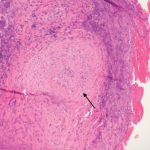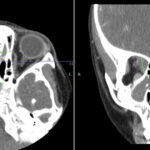Dr. White says studies looking at large claims databases are becoming more common. Due to technological innovations, researchers are now better positioned to both create these large data sets and later mine them. “It does give you a certain degree of statistical power, allowing you to make conclusions more easily,” he says. “It more accurately describes a situation of a rare disease.”
What the Future Holds
In future studies, Dr. White speculates it would be helpful to see if GPA patients are more prone to infections from specific organisms. He also thinks a prospective trial of patients given different immunosuppressive cocktails (e.g., mycophenolate mofetil vs. cyclophosphamide) may yield useful results.
Dr. White says epidemiological studies for rare diseases are key. “It’s important because with such rare diseases, it becomes difficult if not impossible to do randomized controlled trials prospectively, so you really need to try to look at the population as a whole.”
He says this study included only about 200 pediatric GPA cases, but that a researcher would perhaps want more than that for a randomized controlled trial. “Epidemiology allows us to glean insights that would ordinarily not be obtainable.”
Ruth Jessen Hickman, MD, is a graduate of the Indiana University School of Medicine. She is a freelance medical and science writer living in Bloomington, Ind.
References
- Panupattanapong S, Stwalley DL, White AJ, et al. Epidemiology and outcomes of granulomatosis with polyangiitis (GPA) in pediatric and working-age adult populations in the United States: Analysis of a large national claims database. Arthritis Rheumatol. 2018 May 27.
- Pearce FA, Grainge MJ, Lanyon PC, et al. The incidence, prevalence and mortality of granulomatosis with polyangiitis in the UK Clinical Practice Research Datalink. Rheumatology (Oxford). 2017 Apr 1;56(4):589–596.
- Grisaru S, Yuen GW, Miettunen PM, et al. Incidence of Wegener’s granulomatosis in children. J Rheumatol. 2010 Feb;37(2):440–442.
- Rottem M, Fauci AS, Hallahan CW, et al. Wegener granulomatosis in children and adolescents: Clinical presentation and outcome. J Pediatr. 1993 Jan;122(1):26–31.


